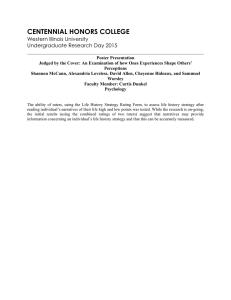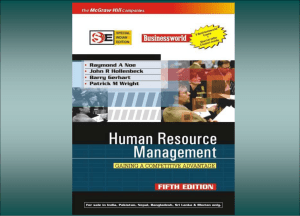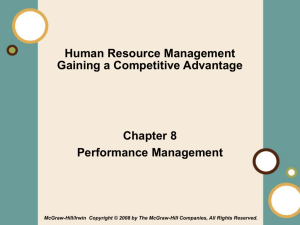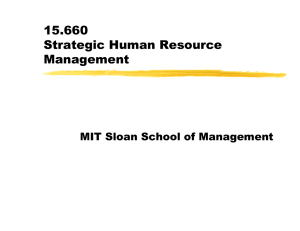SVKM’S NMIMS UNIVERSITY SCHOOL OF DISTANCE LEARNING SUBJECT: HUMAN RESOURCE DEVELOPMENT Date:
advertisement
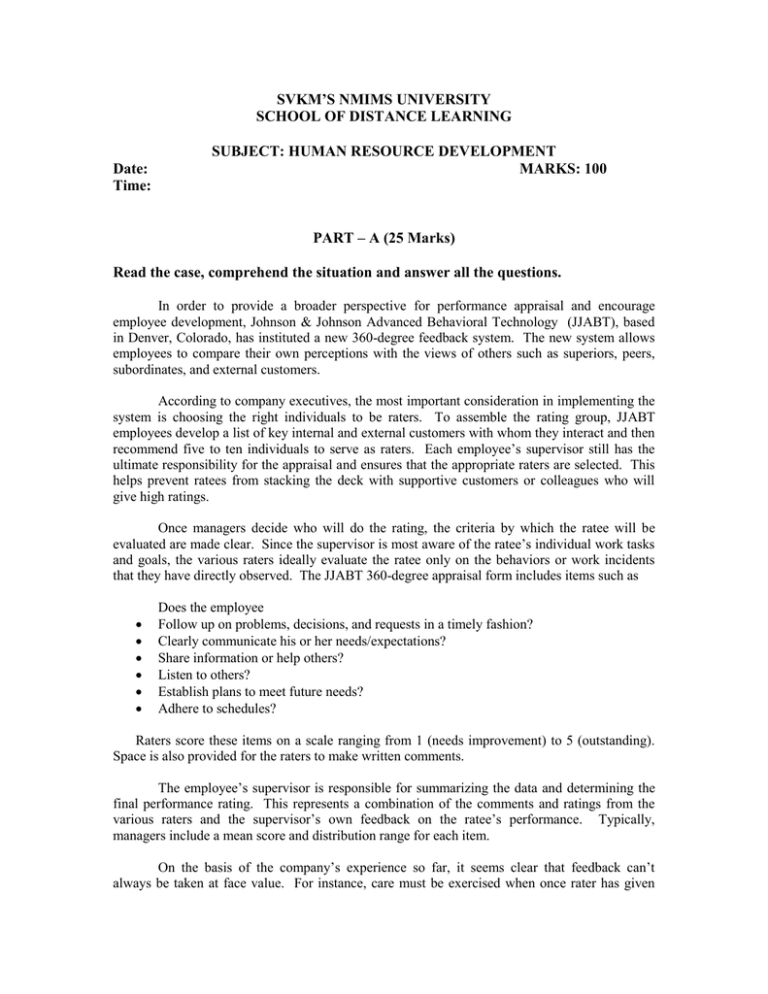
SVKM’S NMIMS UNIVERSITY SCHOOL OF DISTANCE LEARNING Date: Time: SUBJECT: HUMAN RESOURCE DEVELOPMENT MARKS: 100 PART – A (25 Marks) Read the case, comprehend the situation and answer all the questions. In order to provide a broader perspective for performance appraisal and encourage employee development, Johnson & Johnson Advanced Behavioral Technology (JJABT), based in Denver, Colorado, has instituted a new 360-degree feedback system. The new system allows employees to compare their own perceptions with the views of others such as superiors, peers, subordinates, and external customers. According to company executives, the most important consideration in implementing the system is choosing the right individuals to be raters. To assemble the rating group, JJABT employees develop a list of key internal and external customers with whom they interact and then recommend five to ten individuals to serve as raters. Each employee’s supervisor still has the ultimate responsibility for the appraisal and ensures that the appropriate raters are selected. This helps prevent ratees from stacking the deck with supportive customers or colleagues who will give high ratings. Once managers decide who will do the rating, the criteria by which the ratee will be evaluated are made clear. Since the supervisor is most aware of the ratee’s individual work tasks and goals, the various raters ideally evaluate the ratee only on the behaviors or work incidents that they have directly observed. The JJABT 360-degree appraisal form includes items such as Does the employee Follow up on problems, decisions, and requests in a timely fashion? Clearly communicate his or her needs/expectations? Share information or help others? Listen to others? Establish plans to meet future needs? Adhere to schedules? Raters score these items on a scale ranging from 1 (needs improvement) to 5 (outstanding). Space is also provided for the raters to make written comments. The employee’s supervisor is responsible for summarizing the data and determining the final performance rating. This represents a combination of the comments and ratings from the various raters and the supervisor’s own feedback on the ratee’s performance. Typically, managers include a mean score and distribution range for each item. On the basis of the company’s experience so far, it seems clear that feedback can’t always be taken at face value. For instance, care must be exercised when once rater has given highly negative or positive feedback. JJABT managers stress that the key is to look for trends or patterns in the data. If there are questions or ambiguities in the raters’ feedback, supervisors will often solicit additional feedback from the same or new rates. After summarizing the data, the supervisor conducts the formal appraisal interview with the ratee. To ensure fairness, raters are provided the option of being anonymous or open in their feedback. If the rater requests anonymity, then the supervisor must not reveal his or her identity to the ratee when discussing the performance review. However, if the rater is willing to be open, then the supervisor may refer the ratee with questions about his or her feedback to the rater. In this way, it is hoped that the 360-degree appraisal can become less an evaluative tool and more a comprehensive system for enhancing communication, facilitating self-development, and improving performance. QUESTIONS 1. What are the advantages and disadvantages of Johnson & Johnson’s 360-degree appraisal? 2. Do you think the ratings system is useful? How might you suggest improving it? What are your views on the anonymity issue? Should raters be encouraged to be open? Explain. PART - B Answer ANY FIVE Questions (5x15 = 75 Marks) 1. Define HRD and list various HRD systems and sub-systems. 2. As an employee, what factors affect your career planning? What are the career anchors which you will consider while planning your career? What are the objectives of career planning? 3. Define Organization Development. Explain Organizational Development Plan 4. Discuss the role of HRD in any ONE of the following sectors: IT Industry Health Sector Government and the Public Systems 5. Explain the process of Coaching and Mentoring 6. Using Kurt Lewin’s three-step approach to change, explain how managers in large organizations implement change? 7. Discuss how compensation is designed in an organization. 8. “Effective Management of organizational diversity helps in building strong and competitive organizations due to the synergy created by the talents of a diverse workforce.” Discuss the advantages of workforce diversity and Human Resource Management strategies for Managing Diversity. 9. Explain the different methods of HRD Audit. 10. A leading public sector bank in India has its branch in Ahmedabad other than 12 branches all over the country. Though, the bank was financially sound, there seemed to be some issues in this branch. The branch has been plagued with officers-staff conflict, inter-union rivalry and bureaucratic culture and consequently, poor financial performance, weak customer orientation and poor customers' satisfaction. Highlighting the given facts, discuss the issues and challenges involved in the process of transforming highly politicized culture to a desirable team-oriented customer-centric performing culture. 11. You are the Sales manager of Viking India Limited. This is a medium-sized FMCG company manufacturing soaps and detergents. You have to train a sales team of 20 in selling skills and customer care. What will be your training plan? What methods will you use in training them? How will you assess the training? 12. Discuss any TWO Taylorism Role of Trade Unions Competency Mapping Action Research *******
